Abstract
The duodenal bacterial population was determined qualitatively and quantitatively in 3 groups of infants with diarrhoeal disease of varying duration. Infants with acute self limiting diarrhoea (group 1) had an abnormal overgrowth of organisms in the upper small bowel which was similar to that found in infants whose diarrhoea persisted after 4 days in hospital (group 2). The total duodenal organism count in infants with diarrhoea persisting after 7 days in hospital (group 3) was almost 100 times greater than either of the other groups. The findings may have important implications in preventing persistent diarrhoea from becoming protracted.
Full text
PDF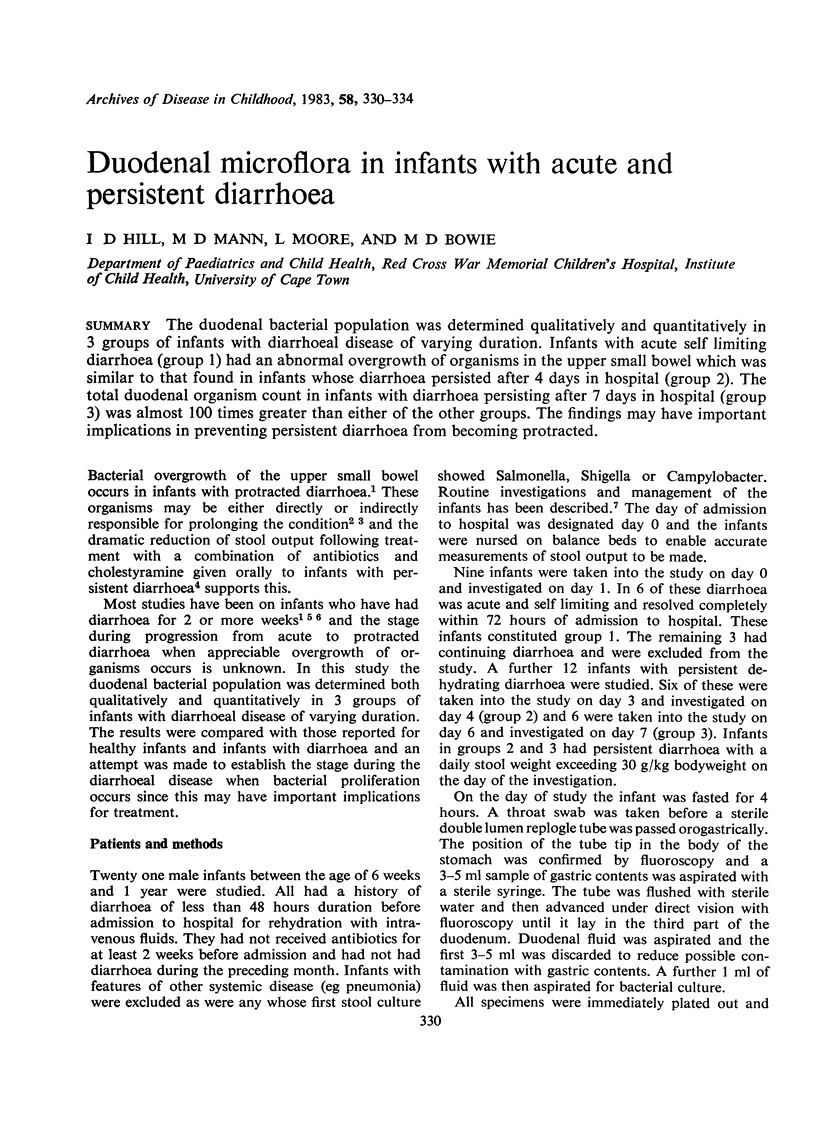
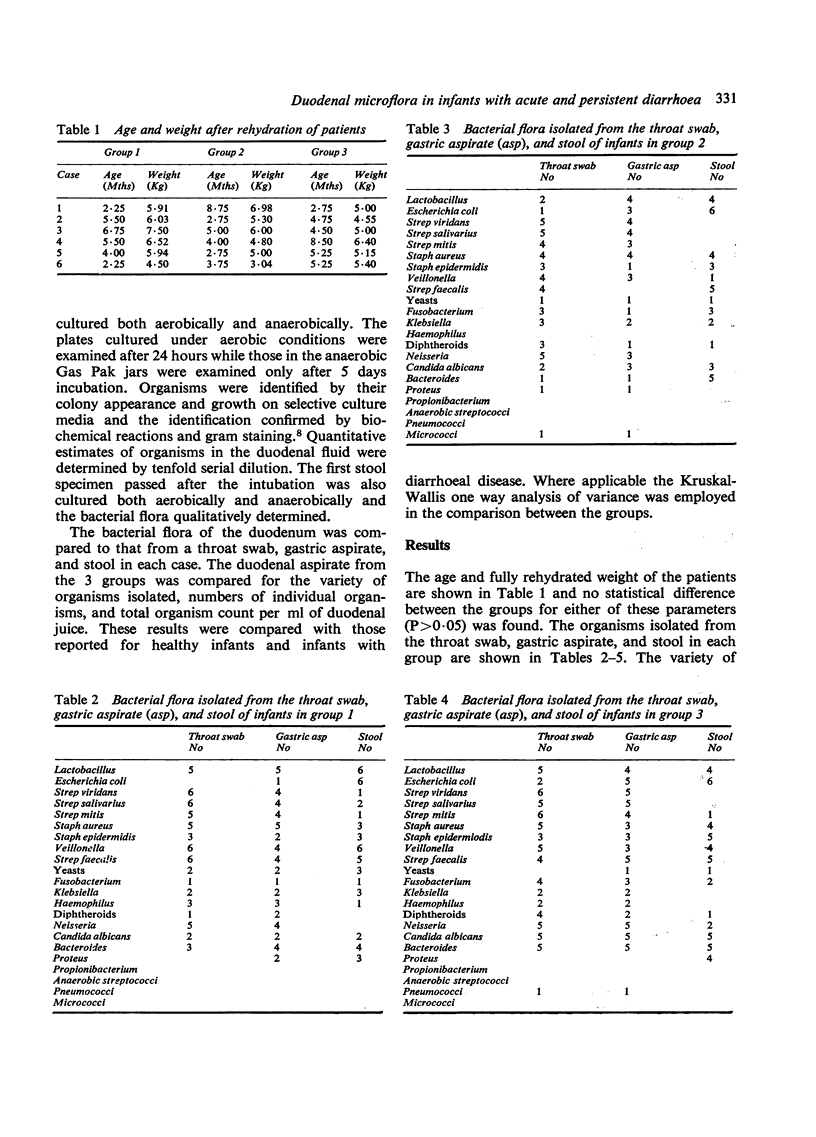
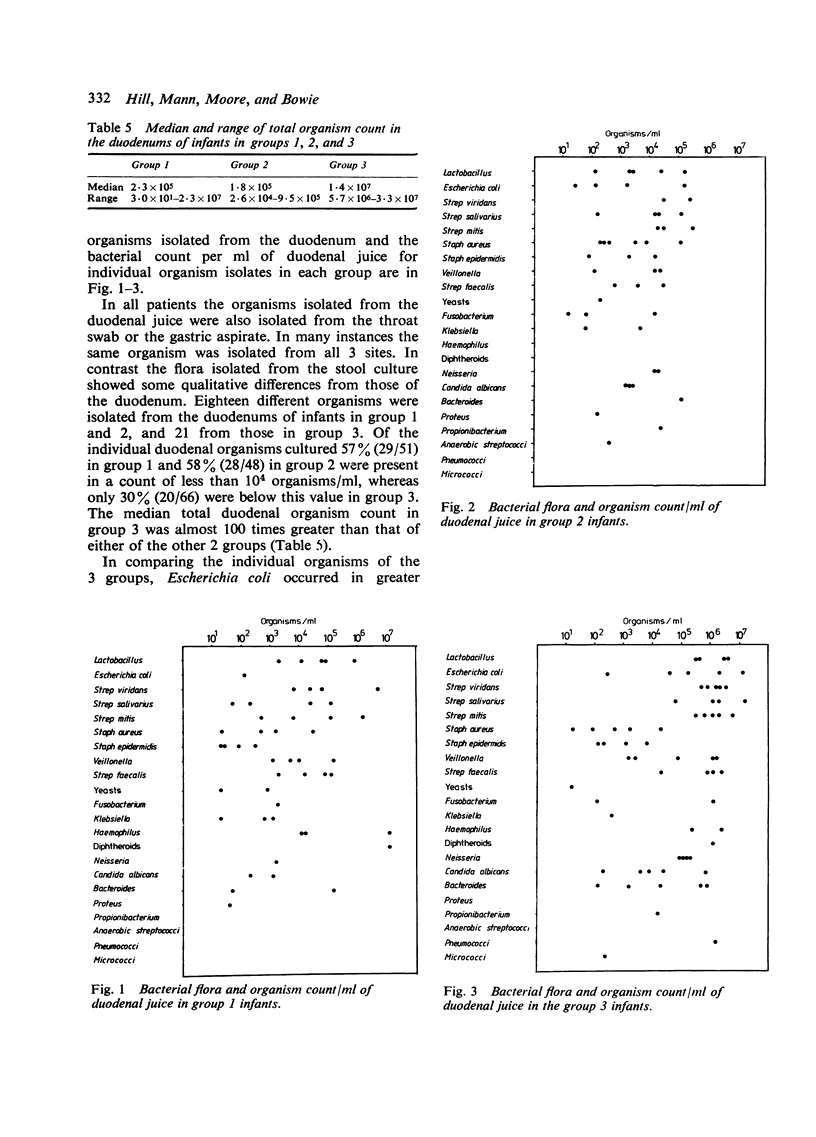
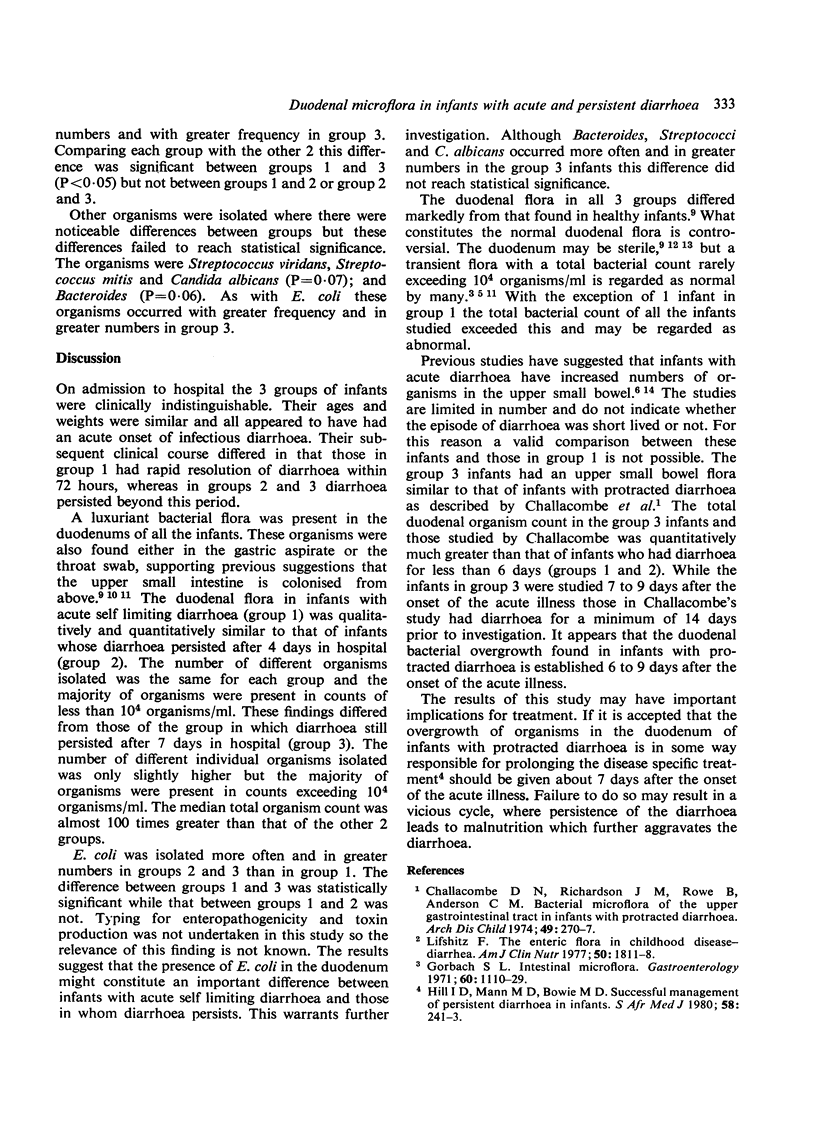
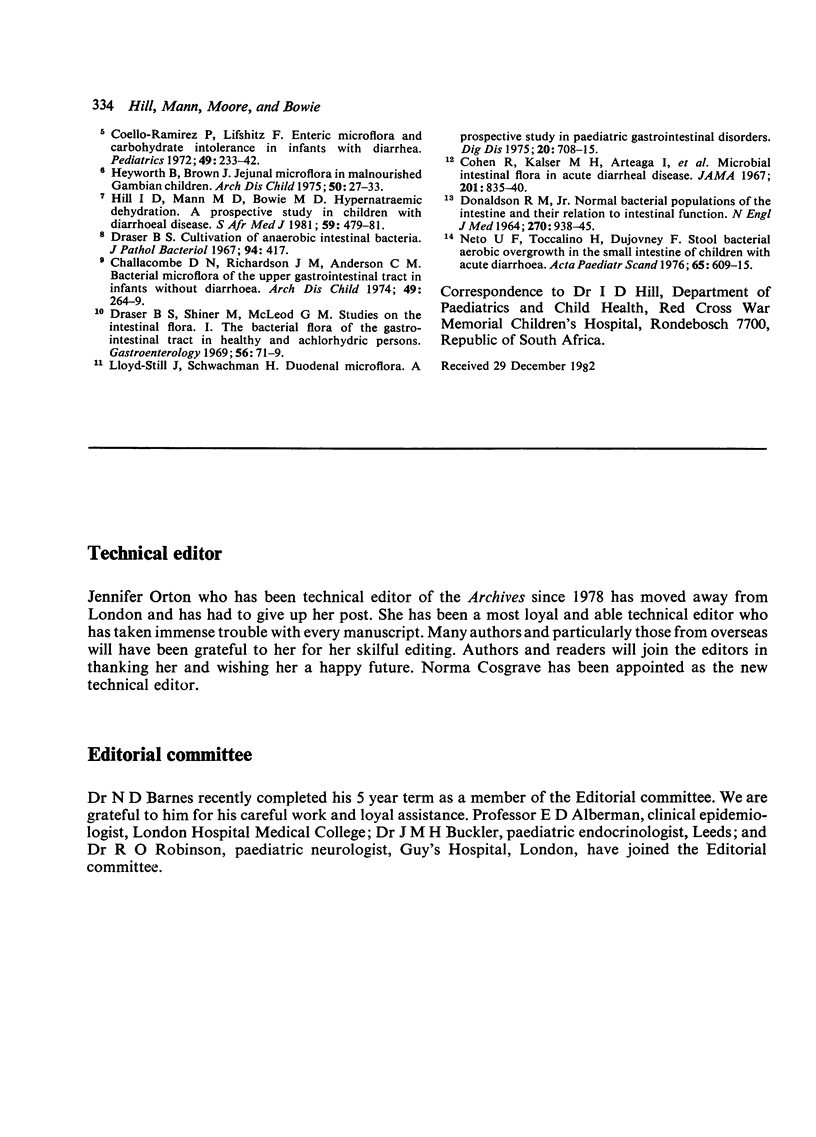
Selected References
These references are in PubMed. This may not be the complete list of references from this article.
- Challacombe D. N., Richardson J. M., Anderson C. M. Bacterial microflora of the upper gastrointestinal tract in infants without diarrhoea. Arch Dis Child. 1974 Apr;49(4):264–269. doi: 10.1136/adc.49.4.264. [DOI] [PMC free article] [PubMed] [Google Scholar]
- Challacombe D. N., Richardson J. M., Rowe B., Anderson C. M. Bacterial microflora of the upper gastrointestinal tract in infants with protracted diarrhoea. Arch Dis Child. 1974 Apr;49(4):270–277. doi: 10.1136/adc.49.4.270. [DOI] [PMC free article] [PubMed] [Google Scholar]
- Coello-Ramirez P., Lifshitz F. Enteric microflora and carbohydrate intolerance in infants with diarrhea. Pediatrics. 1972 Feb;49(2):233–242. [PubMed] [Google Scholar]
- Cohen R., Kalser M. H., Arteaga I., Yawn E., Frazier D., Leite C. A., Ahearn D. G., Roth F. Microbial intestinal flora in acute diarrheal disease. JAMA. 1967 Sep 11;201(11):835–840. [PubMed] [Google Scholar]
- DONALDSON R. M., Jr NORMAL BACTERIAL POPULATIONS OF THE INTESTINE AND THEIR RELATION TO INTESTINAL FUNCTION. N Engl J Med. 1964 Apr 30;270:938–CONTD. doi: 10.1056/NEJM196404302701806. [DOI] [PubMed] [Google Scholar]
- Drasar B. S. Cultivation of anaerobic intestinal bacteria. J Pathol Bacteriol. 1967 Oct;94(2):417–427. doi: 10.1002/path.1700940223. [DOI] [PubMed] [Google Scholar]
- Drasar B. S., Shiner M., McLeod G. M. Studies on the intestinal flora. I. The bacterial flora of the gastrointestinal tract in healthy and achlorhydric persons. Gastroenterology. 1969 Jan;56(1):71–79. [PubMed] [Google Scholar]
- Gorbach S. L. Intestinal microflora. Gastroenterology. 1971 Jun;60(6):1110–1129. [PubMed] [Google Scholar]
- Heyworth B., Brown J. Jejunal microflora in malnourished Gambian children. Arch Dis Child. 1975 Jan;50(1):27–33. doi: 10.1136/adc.50.1.27. [DOI] [PMC free article] [PubMed] [Google Scholar]
- Hill I. D., Mann M. D., Bowie M. D. Hypernatraemic dehydration. A prospective study in children with diarrhoeal disease. S Afr Med J. 1981 Mar 28;59(14):479–481. [PubMed] [Google Scholar]
- Hill I. D., Mann M. D., Bowie M. D. Successful management of persistent diarrhoea in infants. S Afr Med J. 1980 Aug 9;58(6):241–243. [PubMed] [Google Scholar]
- Lifshitz F. The enteric flora in childhood disease--diarrhea. Am J Clin Nutr. 1977 Nov;30(11):1811–1818. doi: 10.1093/ajcn/30.11.1811. [DOI] [PMC free article] [PubMed] [Google Scholar]
- Lloyd-Still J. D., Shwachman H. Duodenal microflora: a prospective study in pediatric gastrointestinal disorders. Am J Dig Dis. 1975 Aug;20(8):708–715. doi: 10.1007/BF01070827. [DOI] [PubMed] [Google Scholar]
- Neto U. F., Toccalino H., Dujovney F. Stool bacterial aerobic overgrowth in the small intestine of children with acute diarrhoea. Acta Paediatr Scand. 1976 Sep;65(5):609–615. doi: 10.1111/j.1651-2227.1976.tb04940.x. [DOI] [PubMed] [Google Scholar]


